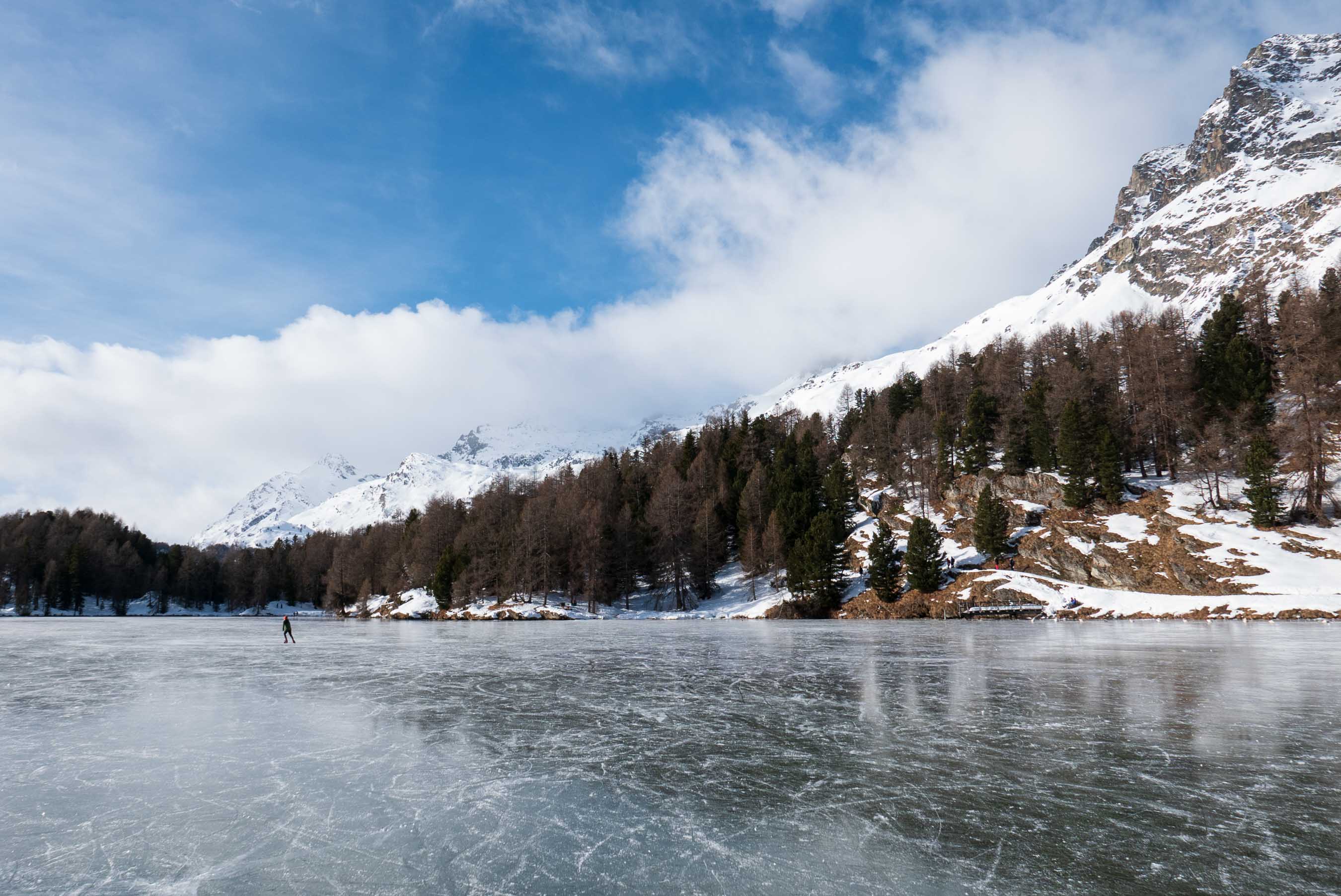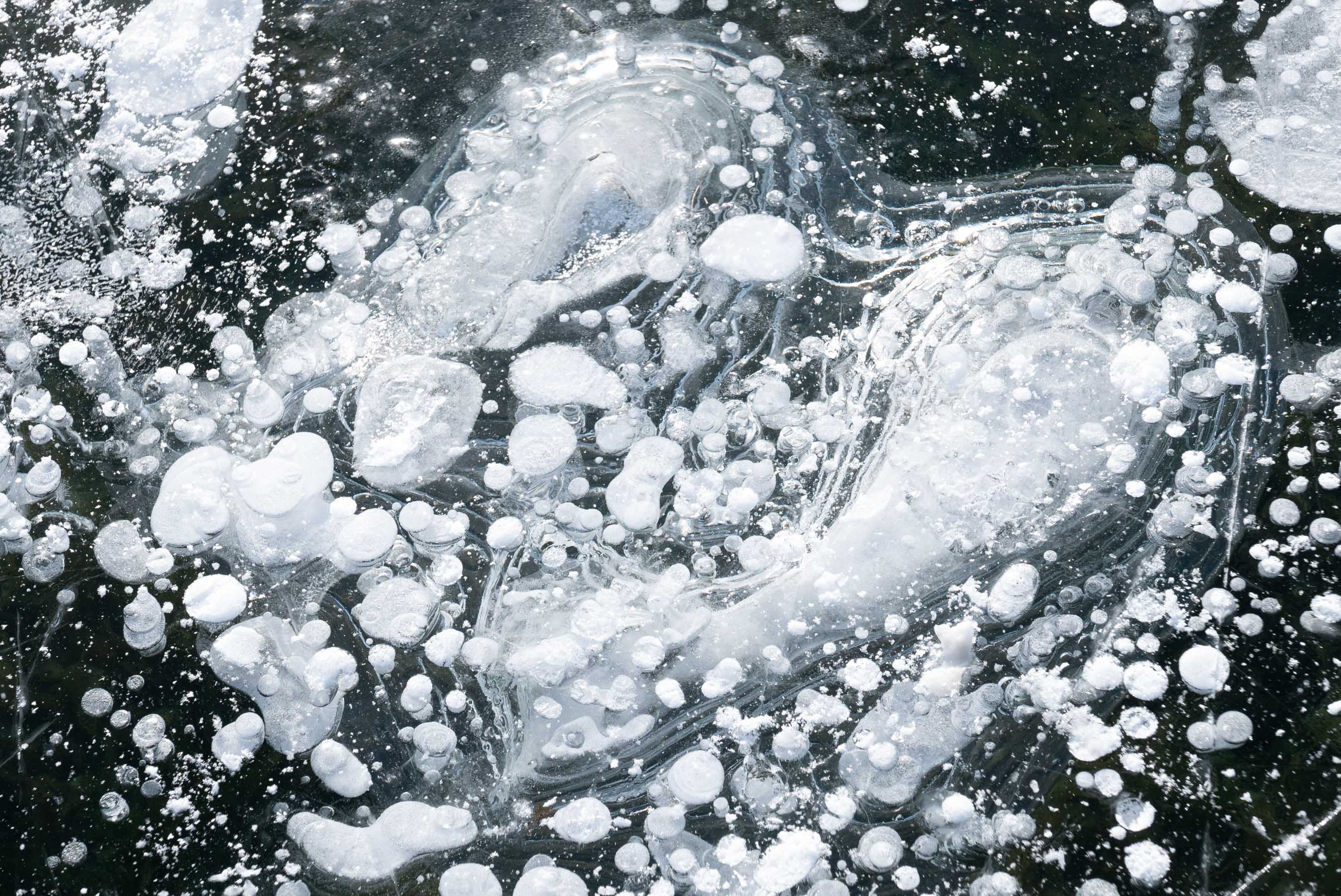On one of the first days of the new year I took a walk on the frozen lake of Sils, Switzerland. The lake is located at 1800 m.a.s. in the neighborhood of the triple-watershed at Passo Lunghin and is fed directly from the source of the Inn. Its water flows down the valley of Engadina, crosses the border to Austria, passes Innsbruck and joins the waters of the river Danube at Passau, Germany, taking on its journey to the Black Sea.

While walking on the ice I got more and more attracted about the various shapes, bubbles and inclusions I discovered in the icy surface. I heard the ice crack and sing in the warm sun and realized, that even something as hard as ice is constantly changing its shape. Information is taken in, the process of freezing and thawing is not completed, the process’ history can be read in the details of the icy structure…

Information stored in water –
– I had to think of the scientific research by Gerald Pollack (Institute of Biotechnology, University of Washington, US), whom Mathias Plüss interviewed for the project RESERVOIR in 2015. Pollack discovered a “fourth phase of water“, beyond the three known phases vapor, liquid and solid. This phase is like a gel, developing in the process of freezing before the solid phase of ice is reached, .i.e. at about 4° Celsius, having the highest density of all phases.
Moreover, the gel phase of water develops as a thin coat at hydrophilic surfaces like organic cell-membranes, therefore the water in our cells happens to be mainly in the fourth phase. Pollack named the phase EZ (Exclusion Zone) – referring to the fact, that all particles alien to water are excluded from its molecular structure, making it extremely pure.
And now, what makes this phase extremely interesting in behalf of the storage of information: its molecular structure is different than the incidental one of the liquid phase or the crystalline of the solid phase. Its molecules are ordered three-dimensionally like the molecules of Silicium, which is the preferred material for digital memory in computer technologies. So, it is possible but not researched yet, that water in its fourth phase has an extremely high potential for storing information, especially in organic cells like our brain, which consist of 80% of water…
So, while studying the structures of the solid ice beneath my feet, I had to think about all the information which is included in water like sediments and minerals, but also the information which water might store and transport at a range we can’t imagine yet.
The interview with Gerald Pollack was published in RESERVOIR, Water and Memory, ed. by Regina Hügli, 2016.
